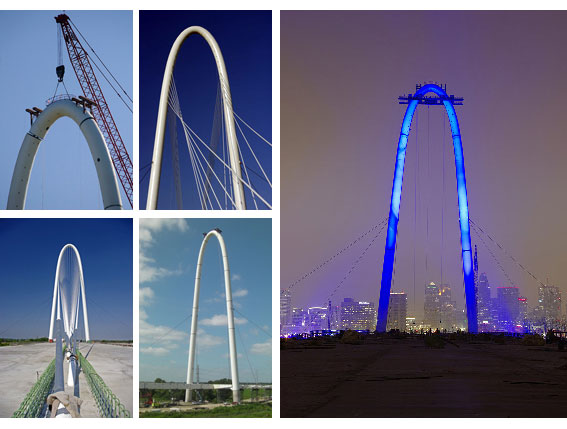
The bridge construction: completion of the 400 feet (122 m) center-support-arch and cable installation
Abstract
The Margaret Hunt Hill Bridge is a cable stayed bridge with a main span of 365.0 m and with a 122.0 m tall main central arch.
The bridge was designed by the world famed architect Santiago Calatrava, and it is part of the City of Dallas’s Trinity River Corridor Project.
The bridge represents an example of a cable stayed mixed steel-concrete structure, where the stay cables are asymmetrically connected to the center of the deck and to the top of the central transverse steel arch.
The steel subcontractor for the construction of this bridge is Cimolai Spa of Italy, who selected EnginSoft to perform a thorough investigation of the ultimate, service and extreme behavior as a cross validation of its final design, before construction.
